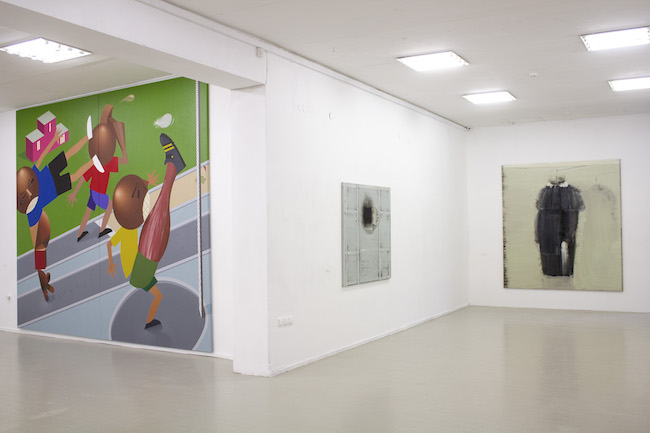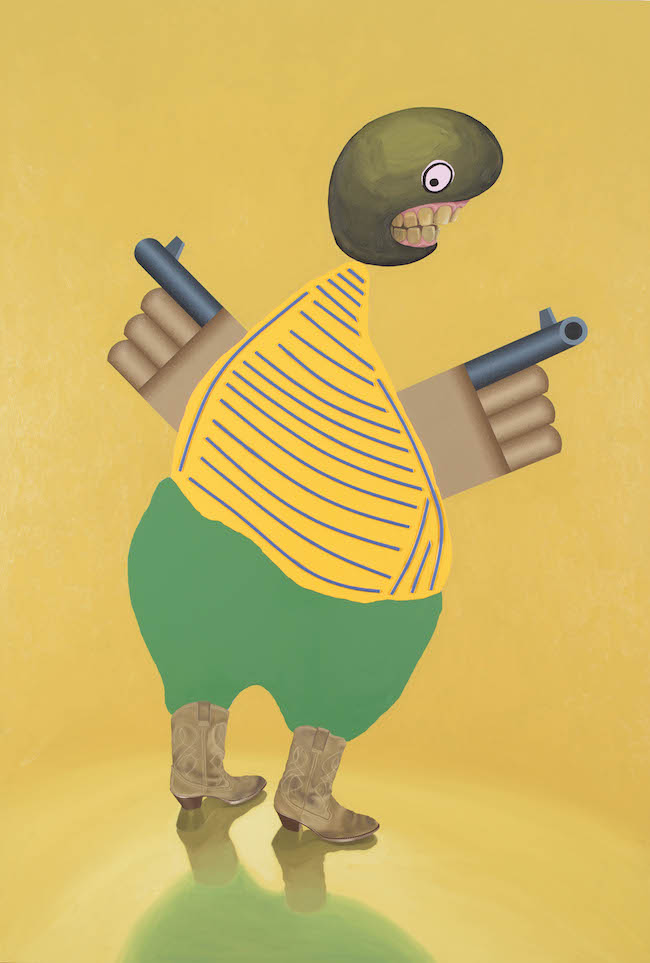
Brothers-in-arts
An express-interview with Kaido Ole on his friendship with Jonas Gasiūnas and their joint exhibition Družba at Meno Parkas gallery in Kaunas
07/01/2019
It is unlikely that the American writer Harper Lee knew that her words would be of such great importance when she wrote the following line in her widely known novel ‘To Kill a Mockingbird’: ‘You can choose your friends but you sho’ can’t choose your family’. And it is indeed true that friends are the family that you choose yourself, and that the relationships you build depend on active engagement coming from both parties.
Friendships are important not only in one’s private life but also in one’s public life, and it often happens that the personal and social amity between two people merges into one story line. Ultimately, the relationship that both share also becomes a reflection of each individual. In the history of art, there have been many stories of friendly companionship between artists – Marcel Duchamp and Salvador Dalí, Francis Bacon and Lucien Freud, Andy Warhol and Jean-Michel Basquiat, and many, many more. These are friendships that have influenced the art world and the artists themselves, in addition to serving as new study material for art theoreticians and creating space for diverse artistic interpretations.
A Baltic-centred artistic friendship exists between Estonian painter Kaido Ole and Lithuanian artist Jonas Gasiūnas. They have been friends for a long time despite the physical distance and rare engagements. The statement of the exhibition says: ‘They work far away from each other, they perceive the world in different ways, and they create dissimilarly, yet they are joined by a special connection that, from time to time, brings them together as a duet in exhibitions.’ Ole’s and Gasiūnas’s joint exhibition Družba is on view at the Meno Parkas gallery until January 25.
Arterritory.com invited Kaido Ole to an express-interview to reveal the story behind the forming of this friendship.

The exhibition Družba is an artistic tribute to your friendship of many years with Jonas Gasiūnas. How did you two become friends, and what has been the key to maintaining it over the years?
When I first saw him, it took only a few seconds for me to understand that I want to talk with this guy. If you feel this kind of affinity, you have to trust it, and usually you don’t end up regretting it. Actually, I have also had negative experiences with friends, but not with Jonas. So, I first met him, and only later on did I see his work somewhere… but both times I had this special positive feeling. Sometimes you can like the person a lot, but their creations – not all that much; this is something I can’t understand, actually.
If this mutual sympathy goes deep enough, it does not need any special care to survive: no having to meet up at least once a year, no long letters every month, no Christmas cards every year... There can be a 10-year-long break, yet the next time you meet, you just start where you left off – without any problems. Our very first meeting was proof of this; I had never met him before, but our conversation was pure joy for me.
I still don’t have any of his works at my home, but I’m working hard to get one – actually, to do an exchange of our works. This way, there will be a constant dialogue between us forever.

In the past there have been many ‘famous’ friendships between two artists – Paul Gauguin and Vincent van Gogh, Andy Warhol and Jean-Michel Basquiat, Lucian Freud and Francis Bacon, and many more – and it is no secret that they have influenced and inspired each other. Do you affect each other’s work, and if yes – then how?
There are so many layers in human beings, and I don’t know how deep we actually are. I like to compare myself with a very big company at which ‘the rational me’ is just the boss who is sitting in the top office. As we know, bosses only give the main orders, and they are only informed about the most important or overrearching issues. They hardly even know how everything works on every floor under them; they can just imagine it, or simply hope that they know what’s going on.
In answer to your question, on this ‘boss-level’, I have never given any orders that would lead to ‘borrowing’ or ‘stealing’ something from the ‘Gasiūnas Company’, even if I respect and admire it very much. We don’t even meet up that often – increasingly less with every year – but we are ‘brothers-in-art’ somehow, and in different ways we do ‘meet up’ very often. So, I don’t know how we influence each other, but I think we share the same toy box quite a lot. The funny thing is, rather often I’m not able to follow Jonas’s explanations about his works, or even art in general. If I observe particular paintings on my own, I will always be touched; there are never problems with understanding him in my own way.
Actually, I prefer having a direct dialogue with art, thereby preserving myself the freedom to make the wrong conclusions.

What, in your opinion, is the best way of representing friendship in art?
I believe friendship does not need any special representing. It can be done, of course, but then it is rather man-made and a bit fake. If two people are friends, then this chemistry is everywhere and somehow it influences every act that they do together. Our show at the Meno Parkas gallery, at least from my side, was also carried by this naïve hope: even if it had failed, it would still have been right to have done it.
%20on%20canvas.jpg)
Jonas Gasiūnas. I WAS DRAWING THE FOREST WITH THE CANDLE FLAME. THE RAIN STARTED. 2018. Oil and charcoal (from candle smoke) on canvas
Is this the first time that the concept of friendship has come into your creative practice?
I think that in my case, it also happened before – when I worked together with Marko Mäetamm under the [shared] name of John Smith. We didn’t talk about friendship back in those days; we had more ‘serious’ concepts. But looking back, I’m quite sure that all of the good work that we ended up making happened, first of all, or, only because of, this special chemistry that we had between us.
%20on%20canvas.jpg)
Jonas Gasiūnas. SHE DIDN'T CONSIDER HER LOVE FOR COSMONAUTS HOPELESS. Oil and charcoal (from candle smoke) on canvas
You and Jonas are both painters yet work quite differently, perceiving the events of today in diverse ways. Do you, however, believe in some common tradition or aesthetics in terms of contemporary painting?
Yes, I actually do. Tradition is not even the right word to use, because then it means something that has been created by ourselves once before. I believe that it is more of an essential ‘level of painting’ itself, one that has been given by nature...or God, or the universal mother, or whatever one wishes to call it. I like to think that, in this meaning, painting is like science – we can discover only things that already exist. Every artist who is good enough has felt this very special feeling of how something, at last, starts to ‘work’. After a long time of trying out various combinations, you’ll get to the point of having this special kind of effect that makes [what you’re working on] a real masterpiece. In my opinion, this means that we just come upon these already existing possible combinations – we reach a big crossroads where everything becomes possible.
When I was younger, I preferred to notice differences between periods or artists, but now, I see the similarities first, even between very opposing concepts.

Kaido Ole "Armed Freak". Oil, acrylic and alkyde paint with plastic details on canvas

Kaido Ole "Freak with Book", oil and acrylic on canvas

Kaido Ole "Baltic Match". Oil and acrylic on canvas